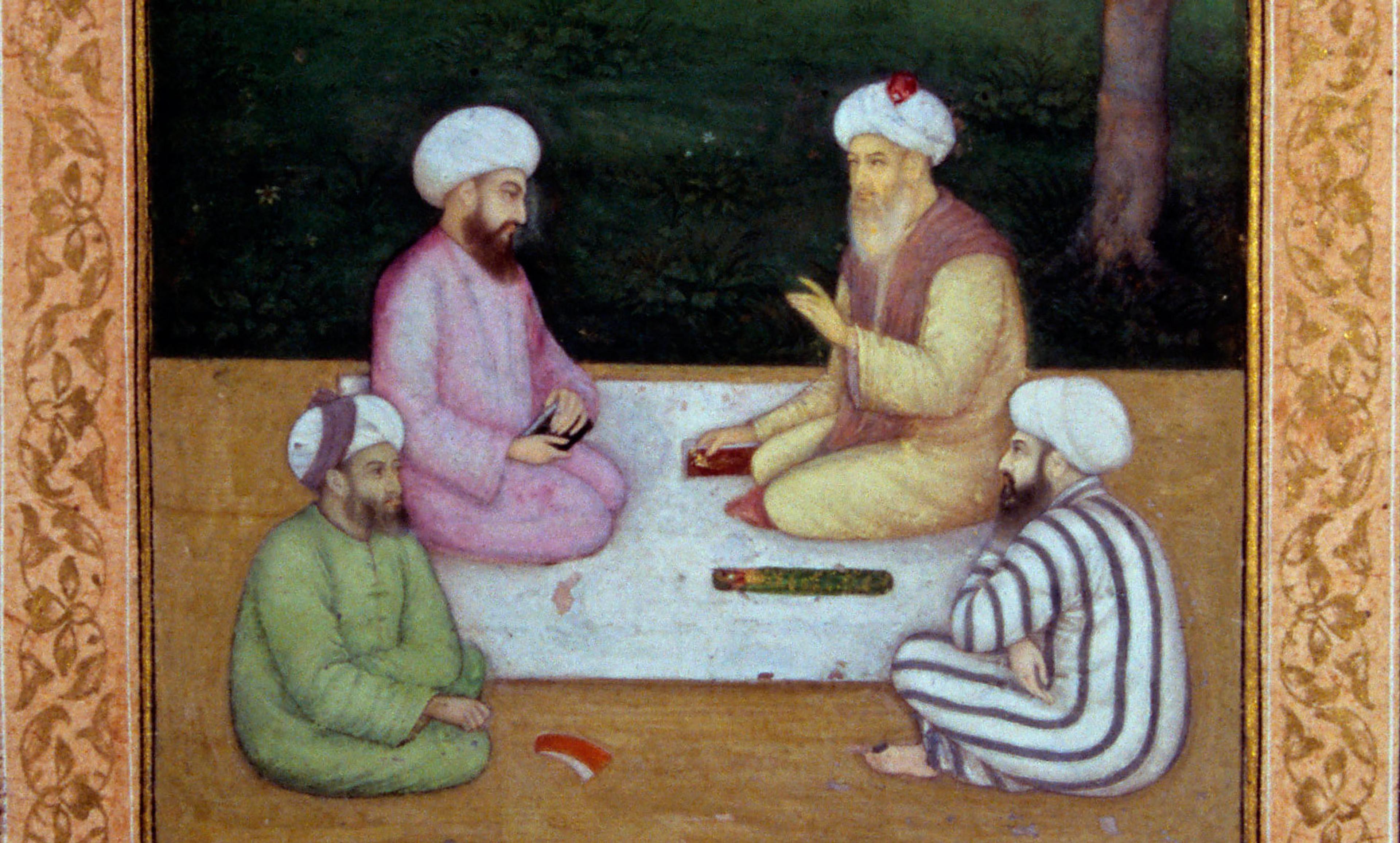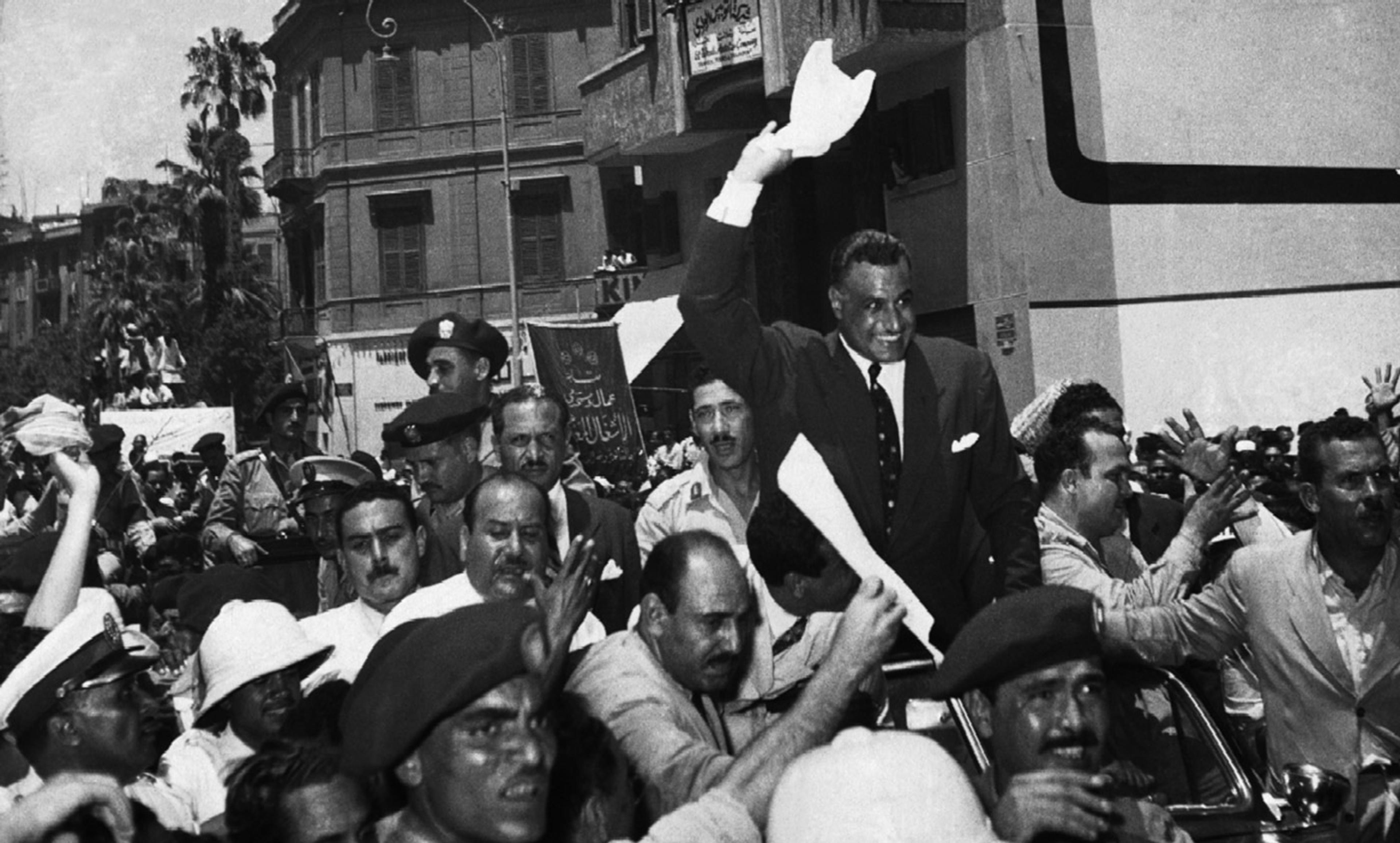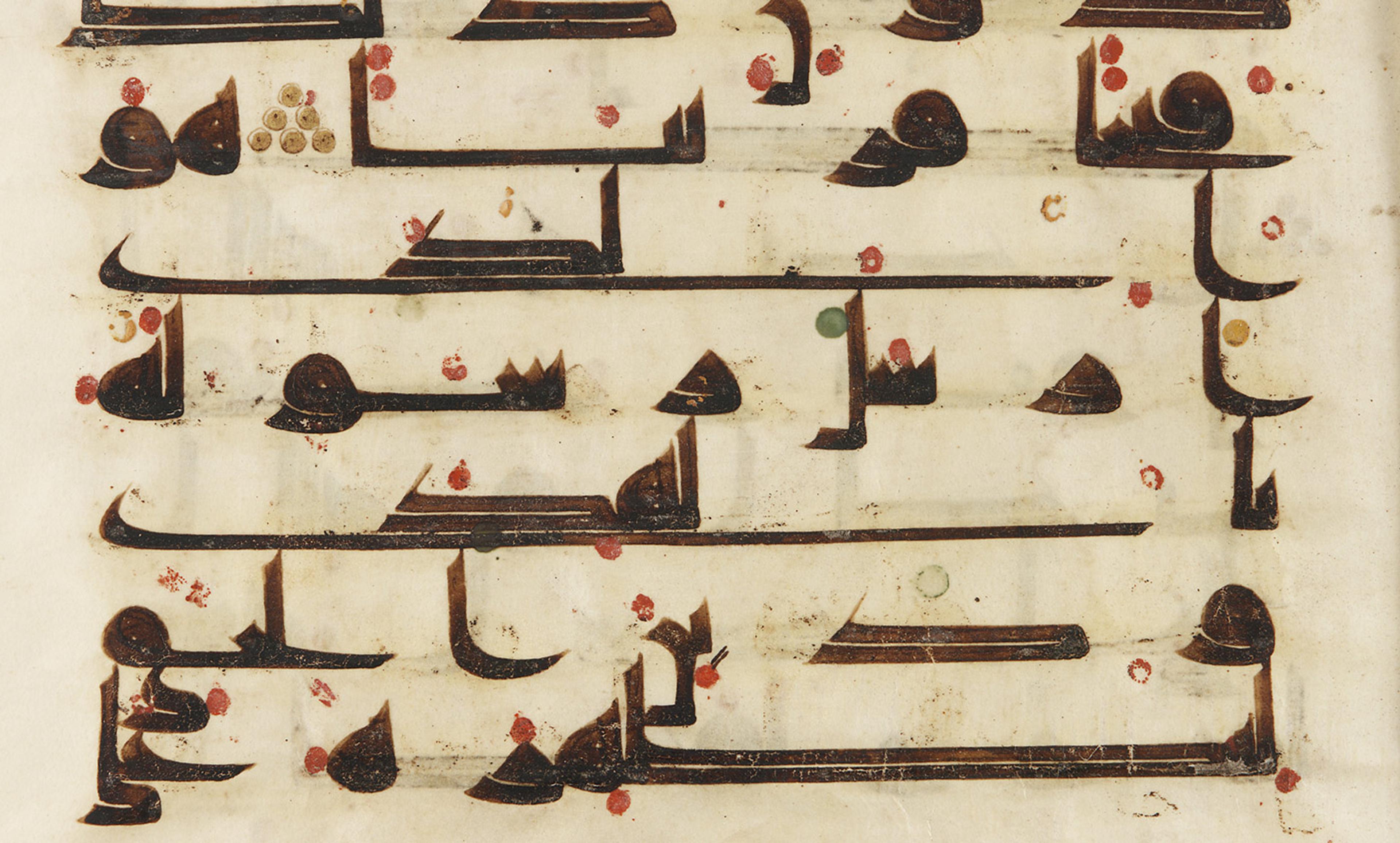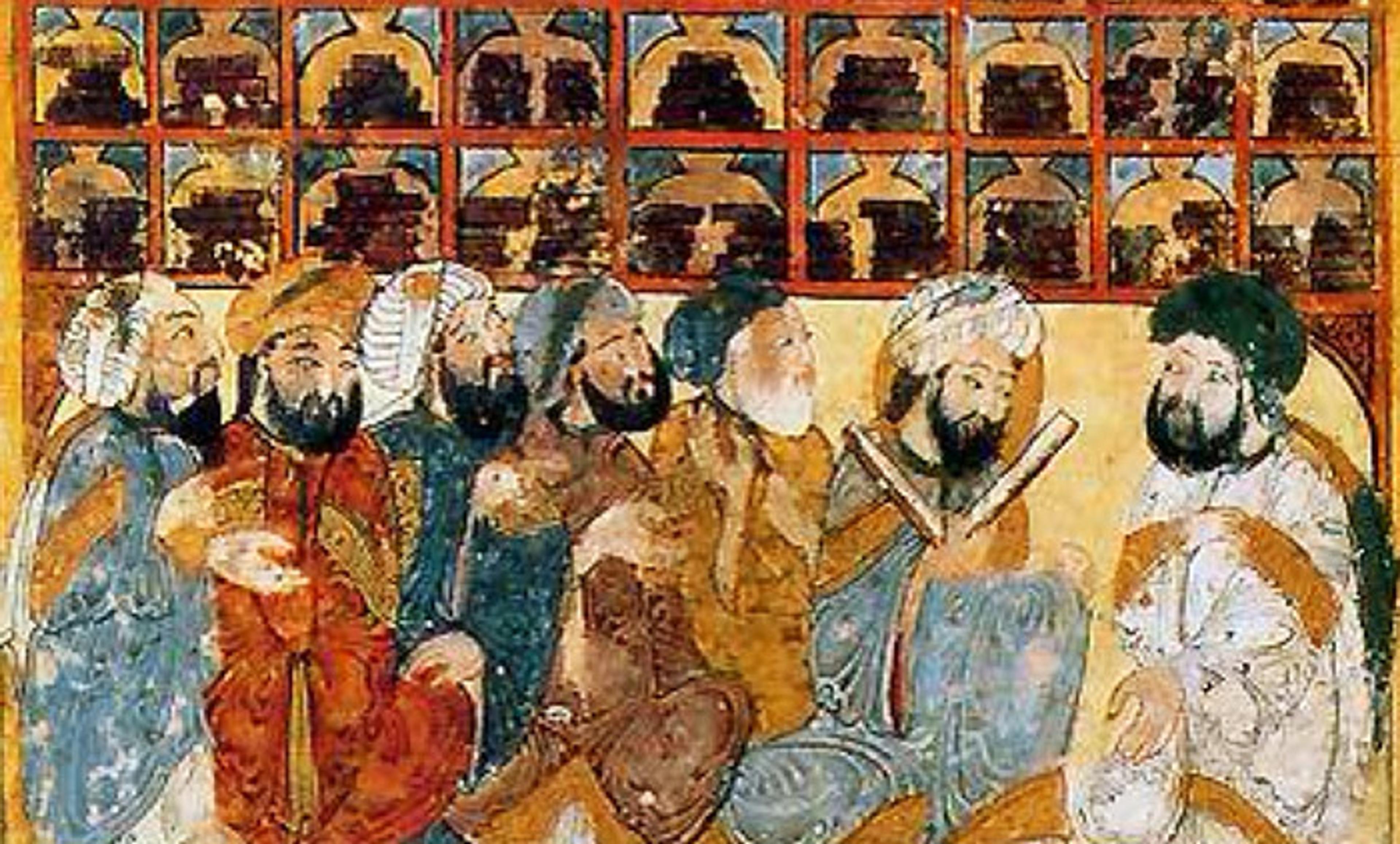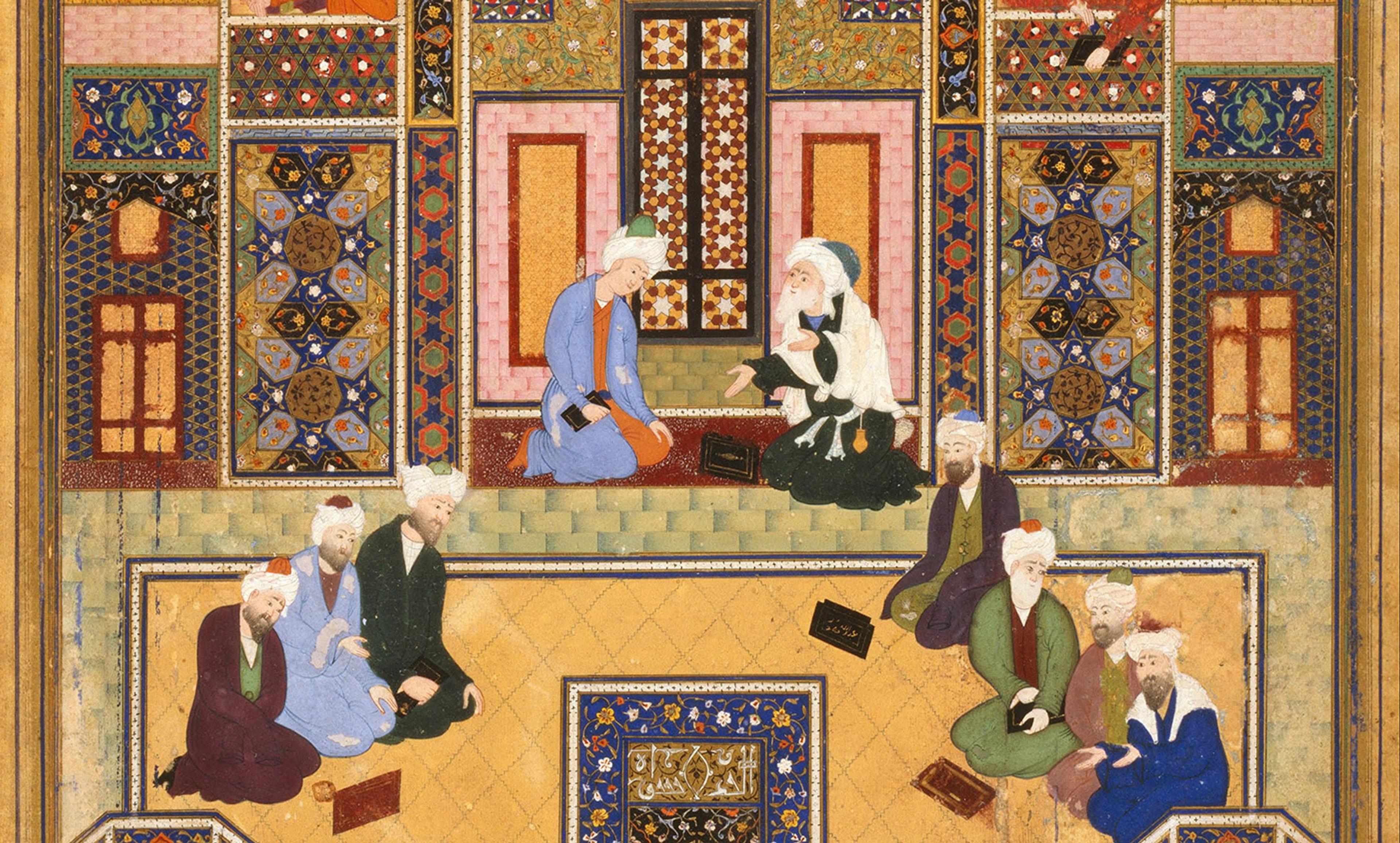Detail from a miniature painting of Sufis, 1750, National Museum, New Delhi, India. Photo by Getty
Even in the most revolutionary thinkers, you will find the uncannily familiar. Sigmund Freud was no exception. Arabs recognised in Freud’s body of thought ideas from classical Islamic thinkers. In the 1940s and ’50s, when intellectuals translated Freud’s work into Arabic, they reached out to Ibn Arabi, the great 12th-13th-century Sufi mystic philosopher. The Egyptian playwright and novelist Tawfiq al-Hakim dates the impulse to blend traditions as far back as Alexander’s conquest of Syria and the eventual translation of philosophical works from Greek to Syriac.
Under Roman rule, Egypt was a centre of learning and part of a shared classical intellectual world, which included Alexandria as much as it did Athens and Rome. Subsequently, Greek philosophy, and particularly the works of Plato and Aristotle, had been energetically translated into Arabic throughout the early Islamic period, contributing to the vitality of Hellenic philosophy. For al-Hakim, Greek ideas were poured into the mould of Islamic philosophy. This process was also evident in al-Hakim’s own work combining Greek tragedy and Islamic legends, in order to effect what he called an ‘intermarriage between two literatures and two mentalities’. It is not at all surprising, then, given this tendency to draw on shared traditions, that Arab intellectuals turned to a mystical Islamic vocabulary when translating Freud in the middle of the 20th century.
Beginning in 1945, Yusuf Murad, an academic psychologist and purveyor of the Freudian and psychoanalytic tradition, published a dictionary of terms that provided the Arabic equivalents to English, French and German terms in the fields of psychology and psychoanalysis. Freud’s concept of the ‘unconscious’ merited special attention. The Arabic term became Ibn Arabi’s redolent al-la-shu‘ur, discussed in his classic, The Bezels of Wisdom. Ibn Arabi’s poetic and elliptical work had fascinated readers for centuries, just as it fascinated 20th-century Arab Freudians. In the Bezels, Ibn Arabi relates the parable of Abraham, whom God visits in a dream and tells to sacrifice his son. According to Ibn Arabi, sleep and dreams occur in the plane of the imagination (hadrat al-khayal) and must be subject to interpretation.
As Ibn Arabi relates, God said to Abraham: ‘You believed in a vision,’ which Ibn Arabi understands as Abraham’s quintessential error. Ibn Arabi thinks that Abraham errs in taking the dream literally when he should have interpreted it instead. Or as the French psychoanalyst Jean-Michel Hirt phrased it in 2009, the dilemma is ‘whether to believe or to interpret one’s dream’. It was precisely because he was unaware or unknowing (unconscious – la-yashu‘ur) of what he saw (‘the true expression of his vision with God’) that Abraham became heedless, neglecting the necessity of interpretation, and instead taking the dream literally. Indeed, Ibn Arabi continues, the ‘Real is never unconscious of anything, while the servant is necessarily unconscious of such a thing in relation to some other.’ Later Arab interpreters of Freud drew upon this idea of an ‘unknowing’ as indicating the presence of an unconscious in man.
The parable of Abraham and his son provides rich material for a Freudian perspective. It deeply resonates with Freudian concepts and preoccupations, in addition to the idea of man’s unconscious. The parable illustrates the need for the interpretation of dreams, for example. The understanding of dreams in Arab and Muslim cultures are part of very old and rich traditions of oneiric interpretation. Dreams, like texts, had both manifest (zahir) and latent (batin) meanings. The latent meanings of dreams could be understood with the help of signs (ayat) and allusions (isharat). A classic example from the Quran is Joseph’s description to his father: ‘I saw [in a dream] 11 stars, as well as the sun and the moon: I saw them prostrate themselves before me.’ For Joseph, this dream can be interpreted symbolically with the stars representing his brothers, who do in fact later prostrate before him once he is in a position of authority in Egypt.
Ibn Arabi finds this interpretation sorely lacking and suggests, rather, that Joseph is unaware that he is in actuality still dreaming, even when he later sees his brothers in Egypt. Joseph believes his dream, and therefore the work of interpretation, to have ended. But as the Islamic studies scholar Henry Corbin has pointed out, Ibn Arabi proposes instead the prophetic tradition: ‘Humans are asleep; at their death they awaken.’ Earthly existence, Ibn Arabi states, is a ‘dream within a dream’. As the Japanese scholar Toshihiko Izutsu noted in Sufism and Taoism (1983), this reveals ‘the very starting-point of Ibn Arabi’s ontological thinking, namely, that so-called “reality” is but a dream … an unreality’. But this does not mean that it is a subjective fantasy, rather we can view it, Izutsu argues, as ‘an “objective” illusion’.
This conception of reality as being at once an unreality, while at the same time not an illusion at all, brings to light another concept intimately connected to psychoanalysis, the concept of the Imaginary. The Imaginary is greatly elaborated in the later psychoanalytic tradition, most notably by Jacques Lacan – Lacan had read about Ibn Arabi by way of Corbin. As the religious studies scholar William Chittick elaborates, Ibn Arabi perceived the Imaginal world as an intermediate realm, a world in between the spiritual and the corporeal. As Lacan would later do, Ibn Arabi theorised the example of one’s own reflection in the mirror. Is my image in the mirror real or unreal? In one sense it is, and in another sense it is not. This clarifies the nature of the Imaginary as both existent and non-existent.
The affinities between mystical Islam and Freudian thought are clear, and deep. But did Islamic thinkers make these connections between psychoanalysis and Islam? They did, often pointing to the shared traditions of dream interpretation, as well as the shared technique of understanding texts and dreams through the relationship between the latent and manifest meaning of religious knowledge. Islamic thinkers also recognised the uncanny resemblance between the analyst-analysand and the shaykh (or spiritual master)-disciple relation in Sufism. The mid-20th-century Egyptian Abu al-Wafa al-Ghunaymi al-Taftazani, a shakyh of a Sufi order and later a professor of Islamic philosophy and Sufism at Cairo University, began writing about Sufism in the 1950s. He was widely read in Egypt and beyond, and he often compared Sufism and the psychoanalytic tradition.
In particular, al-Taftazani noted that both Sufism and psychoanalysis relied upon an introspective method; both engaged not with the manifest content of the psyche or soul (nafs), but with its latent content, a domain often marked by sexual desires. Most importantly, both exhibited a concern for the batin or the realm of hidden meaning, as well as for the inner reaches of the unconscious (al-la-shu‘ur). The Sufi shaykh, much like the analyst, he observed, must ascertain unconscious thoughts and desires from his disciple, in order to facilitate a transformation of the self. Sufism and Freudianism were obviously closely related. Abd-al-Halim Mahmud, a scholar of Sufism who would eventually become Grand Imam of Al-Azhar, noted that ‘every Sufi master is a “psychotherapist”, so to speak’. The relationship between the Sufi shaykh and his disciple is, then, one of attunement with potential for psychotherapeutic transformation.
Sufi practitioners understood their struggle to be part of a larger battle between the noble and ignoble tendencies of man. Al-Taftazani emphasised that Sufis aimed to attain direct knowledge and love of God. They sought a mystical union with God, annihilating the ego-self, in which God remains as a sublime excess. It was not, al-Taftazani pointed out, a subjective and individual self-exploration; it was a union with the divine. Freud would likely have seen Sufism as ‘nothing but psychology projected into the external world’, but to al-Taftazani and others it was as an ethical path toward the divine.
Al-Taftazani’s engagement with the Freudian tradition is just one example from the mid-20th century Arab world of the exchange between psychoanalysis and Islam. It was a sympathetic and creative exchange, involving a mutual recognition, and built on genuinely shared and deep affinities between Freudianism and the Islamic mystical tradition.
